
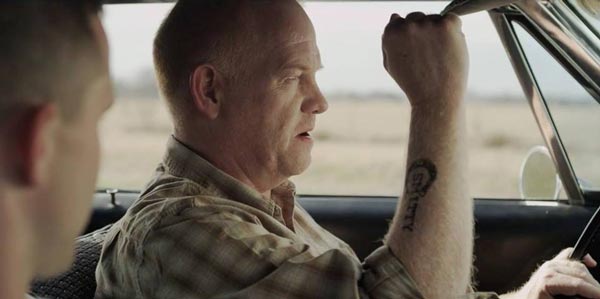
Everybody likes to think they have a story in their past that would make a great film. Somewhat ironically, documentary filmmaker Jack Ballo, had a doozy of a tale that he largely kept to himself for decades. During a long car ride from Nashville back home to Jersey, he finally told the story to his wife. The result? A film called The Doo Dah Man which shares his story of hitchhiking to California after graduating high school with a friend, meeting an escaped convict, and finding himself on the run from the cops while traveling from Arizona to Texas. The film had its world premiere in Atlantic City at the Garden State Film Festival in March.
Ballo and his friend hitchhiked from Sayreville to Huntington Beach, California a few days after graduation. They stayed there for about a month until they ran out of money and decided to return home, reaching Yuma, Arizona at the end of their first day thumbing rides.
“At the end of the night, we went to sleep in our sleeping bags in the desert,” recalled Ballo. “We wake up in the morning and start hitchhiking again. A guy pulls over and, just as we did for every car, we walked up to the car, stuck our head in there to see what was going on. The guy had his window rolled down and he asked us if we had any money. We said that we didn’t, that we were broke, and I could tell that he was broke. He thought for a second and then said “come on in.”
Once Ballo gets in the car, he notices that there’s no key in the ignition — only wires hanging out. This gave them a funny feeling, but being experienced hitchhikers, they knew how to roll with it.
“The first thing is a ride is a ride,” explained Ballo. “We’d taken shady rides before and its part of the game. You just take rides when you can and try to be careful. So this didn’t phase us too much until we saw a cop behind us and the cop kept getting closer and closer.”
The driver’s name was Smitty, something he revealed to them and something they picked up on from the tattoo on his arm. As the cop followed closely, Ballo noticed Smitty getting a bit nervous. He kept sticking his fingernails into his thumb. After a while, Smitty decides to take the next exit, so he puts his blinker on. The cop puts his blinker on too. Smitty takes the exit ramp and puts his blinker on to go over the highway, as does the cop.
“I don’t remember whether the cops hit the lights first or Smitty hit the gas first, but before you know it we’re being chased!” said Ballo.
Knowing the area, Smitty took them on a tour of rundown housing projects and dirt roads. The cop followed them down every road they took until Smitty finally gunned the engine. Ballo remembers dirt all over the place, the car fishtailing at the end of the road and Smitty opening his door and taking off, leaving the pair of teenagers.
And that was their first hour with Smitty. Things would only get crazier from then on.
With Smitty gone, the two got out of the car and noticed that the back of the trunk had a big hole in it where the key belonged. If they had any doubts they were riding in a stolen car, those doubts were instantly erased. About 10-15 minutes later, Smitty returns and utters the line that Ballo has never forgotten, “Hey guys, I’m in a jam.”
Smitty tells them he’s got to get back to the Interstate and they should come with him because they could die in the desert with the heat. The original plan was to get dropped off at the next truck stop or an exit ramp where they could get another ride, but one thing led to another and the need for food set in. With none of them having any money, it was time for improvise. They stopped at a convenience store and Smitty gave them directions to find the cold cuts. He said he was going to cause a disturbance and when he did, the two were supposed to grab the meat and head back to the car.
“So, we went into the store and walked over to the meat section,” recalled Ballo. “Sure enough, Smitty walks in and he begins making this big disturbance. He yells out, ‘Has anybody seen my little brother Jackie?’ He puts his hand out and says, ‘He’s about this big.’ He’s explaining what he was wearing, what he was doing, and how he’s lost and he has to find him. It was all nonsense, just rambling, but for about 30 seconds every eye in the store was on this crazy guy. We put the meat down our pants and walked out the door. Smitty grabs a loaf of bread and a six pack of beer. We jump in the car and he takes off. About 10 minutes later, we had a salami sandwich in one hand, a beer in the other, the radio’s playing, and we were all just getting along.”
The next morning, Smitty conned a Church into giving them some vouchers for gas and food. With a full tank, they headed to a junkyard. Ballo and his friend kept the owner busy, while Smitty did a little shopping on his own. He wound up returning with a pair of license plates and an ignition for the car with a key in it. They manage to open the trunk with a screwdriver and find some cash in a pair of pants. So now they have a somewhat legal car, some cash, a full tank of gas, and food.
“All this happened within 24 hours and it just never stopped!” said Ballo. “We had five days of this.”
After nearly a week on the road together, Ballo could sense a little tension beginning between Smitty and his friend. Meanwhile, the thought of actually being arrested became more and more of a possibility with each day. Ballo knew that the cops would likely have let them go if they were picked up during that initial car chase, but days later they would be thrown in jail with Smitty. The three basically were in agreement that it was time to move on, even though Ballo didn’t want to go. He had gotten close to Smitty during the adventures and struggled with leaving, but the thought of being sent to jail for a long time made the decision a bit easier.
Ballo says he probably told his wife and friends bits and pieces of the story over the years, but never the whole thing. There were just so many adventures during those five days that the story seemed unbelievable, even to Ballo. He spent the entire ride back from Nashville telling her the story and answering her questions. It was the first time in years that he truly thought back to those days and the memories and details began pouring out. After finishing, his wife said this should be a movie. As luck would have it, his wife was headed to London the next day for a business trip where she would meet Claude Green, a former co-worker who had become a filmmaker. She asked him how things were going. He had made a couple documentaries, but said, “I need a story.” She said, “I’ve got a story for you.”
Jack Ballo’s latest documentary is called Destiny’s Bridge. In it, a homeless minister stands up to a New Jersey town that is evicting him, along with 80 other people living in the woods. Police raids and arrests bring uncertainty to these off-the-grid residents that are staking claim to the unused public land that they have been living on for over six years. With the town closing in and eviction on their doorstep, the innovative homesteaders set out to create their own self-sustained community called Destiny’s Bridge.
The film will be available onDVD and Blu-Ray sometime this spring. For more information visit http://www.destinysbridge.com
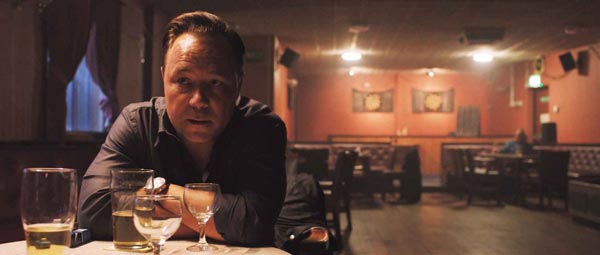
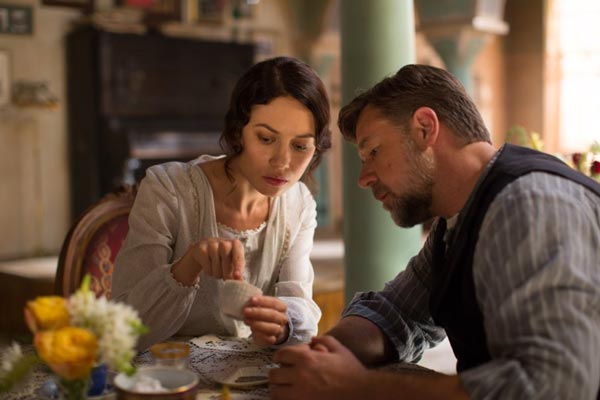
 Scott
Stamper, the owner of The Saint in Asbury Park, has been high on you
for a while. How important is it to have club owners in your corner?
Well, a lot of the time I’m not even aware of it to be honest. It’s
hard to know. When you show up to an event, you sort of feel like they
see bands and artists night after night and you wonder if they get bored
or tired of it or if anyone really ever stands out. So you telling me
that makes me feel good, I didn’t know. That’s cool.
Scott
Stamper, the owner of The Saint in Asbury Park, has been high on you
for a while. How important is it to have club owners in your corner?
Well, a lot of the time I’m not even aware of it to be honest. It’s
hard to know. When you show up to an event, you sort of feel like they
see bands and artists night after night and you wonder if they get bored
or tired of it or if anyone really ever stands out. So you telling me
that makes me feel good, I didn’t know. That’s cool.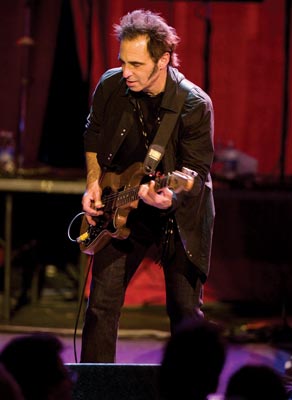 Nils Lofgren replaced Steven Van Zandt just before the Born In The USA
Tour in 1984 and has been with the band ever since. He first met Bruce
Springsteen in 1970 when his band Grin shared a bill with Steel Mill at
the Fillmore West. Over the years, Lofgren saw Springsteen perform
live several times and the two became friends.
Nils Lofgren replaced Steven Van Zandt just before the Born In The USA
Tour in 1984 and has been with the band ever since. He first met Bruce
Springsteen in 1970 when his band Grin shared a bill with Steel Mill at
the Fillmore West. Over the years, Lofgren saw Springsteen perform
live several times and the two became friends. 
 The
copyright infringement case of James Damiano vs. Bob Dylan eclipses the
conflict between Pharrell Williams, Robin Thicke and the Marvin Gaye
Estate, which was settled relatively quickly. Bob Dylan’s alleged
stealing of James Damiano’s songs and the law suit may be the most
controversial story in the history of Rock ’n Roll. The Damiano camp
says it’s been hidden from the public by the mainstream press for over
20 years.
The
copyright infringement case of James Damiano vs. Bob Dylan eclipses the
conflict between Pharrell Williams, Robin Thicke and the Marvin Gaye
Estate, which was settled relatively quickly. Bob Dylan’s alleged
stealing of James Damiano’s songs and the law suit may be the most
controversial story in the history of Rock ’n Roll. The Damiano camp
says it’s been hidden from the public by the mainstream press for over
20 years. They
say that “April showers bring May flowers” and the offices of
SoundPress.net have been showered with an abundance of music this month.
Springing forth from our speakers is a colorful and eclectic array of
sounds from heavy rockers, jam band favorites, living legends and disco
darlings!
They
say that “April showers bring May flowers” and the offices of
SoundPress.net have been showered with an abundance of music this month.
Springing forth from our speakers is a colorful and eclectic array of
sounds from heavy rockers, jam band favorites, living legends and disco
darlings! “We
try to do things we think are innovative and interesting and we don’t
run away from them because of their size,” explained Sam Scalamoni,
Artistic Director of Skyline Theatre Company in Fair Lawn, NJ. This
April, the company presents Dreamgirls, winner of six Tony Awards, which
is based on R&B acts like The Supremes, The Shirelles, James Brown,
and Jackie Wilson.
“We
try to do things we think are innovative and interesting and we don’t
run away from them because of their size,” explained Sam Scalamoni,
Artistic Director of Skyline Theatre Company in Fair Lawn, NJ. This
April, the company presents Dreamgirls, winner of six Tony Awards, which
is based on R&B acts like The Supremes, The Shirelles, James Brown,
and Jackie Wilson. 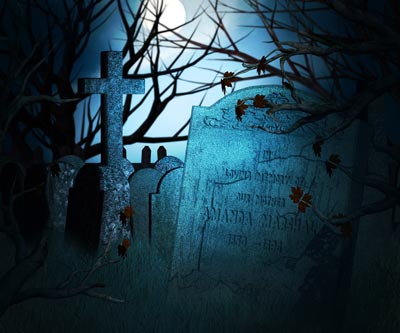 Richard Strand penned Butler, one of the best new works to premiere last year. He returns to NJ Rep in April with The Realization of Emily Linder,
a comic-drama about an eccentric, retired university professor who has
come to the “realization” that she knows the exact day that she will
pass away.
Richard Strand penned Butler, one of the best new works to premiere last year. He returns to NJ Rep in April with The Realization of Emily Linder,
a comic-drama about an eccentric, retired university professor who has
come to the “realization” that she knows the exact day that she will
pass away.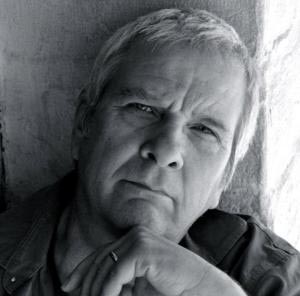 Who are some of the playwrights that have inspired you over the years?
I’ve thought about this question quite a lot. I’ve answered it many
times. My answer has changed often, and I don’t think I’ve ever been
quite honest about it. But here’s what I think right now. The older I
get, the harder it is to influence my fundamental notions about what
makes good writing. I don’t think that is necessarily something I
should brag about, but I believe it is true. And, to take that premise
even further, the writers who got to me when I started writing have had a
more profound influence on me than those I encountered later in life. I
first started forming opinions about what constituted good dramatic
writing when I was quite young – ten, eleven, twelve. Now, to be sure, I
hadn’t seen very many plays at that age, but I did watch a lot of
television. And I remember becoming aware that some of the writing on
television was noticeably better than other writing. Fortunately for
me, some of the best television writing from that time survived in
reruns, so I could watch the episodes many times. If you keep watching
the same episodes over and over, the mechanics of the writing starts to
reveal itself. You can start to see the structure, and you can observe
why some writing works and other writing doesn’t. So, what was I
watching? The Twilight Zone and The Dick Van Dyke Show.
I know that Rod Serling and Carl Reiner – and the many other writers
who contributed to those two shows – have had a more profound effect on
my writing than anyone else. I wish the answer were Arthur Miller or
William Shakespeare or Mary Chase – all of whom I love. But the truth
is: it was Serling and Reiner.
Who are some of the playwrights that have inspired you over the years?
I’ve thought about this question quite a lot. I’ve answered it many
times. My answer has changed often, and I don’t think I’ve ever been
quite honest about it. But here’s what I think right now. The older I
get, the harder it is to influence my fundamental notions about what
makes good writing. I don’t think that is necessarily something I
should brag about, but I believe it is true. And, to take that premise
even further, the writers who got to me when I started writing have had a
more profound influence on me than those I encountered later in life. I
first started forming opinions about what constituted good dramatic
writing when I was quite young – ten, eleven, twelve. Now, to be sure, I
hadn’t seen very many plays at that age, but I did watch a lot of
television. And I remember becoming aware that some of the writing on
television was noticeably better than other writing. Fortunately for
me, some of the best television writing from that time survived in
reruns, so I could watch the episodes many times. If you keep watching
the same episodes over and over, the mechanics of the writing starts to
reveal itself. You can start to see the structure, and you can observe
why some writing works and other writing doesn’t. So, what was I
watching? The Twilight Zone and The Dick Van Dyke Show.
I know that Rod Serling and Carl Reiner – and the many other writers
who contributed to those two shows – have had a more profound effect on
my writing than anyone else. I wish the answer were Arthur Miller or
William Shakespeare or Mary Chase – all of whom I love. But the truth
is: it was Serling and Reiner. 
 “I
don’t know exactly when the Son of Sam came in, but if I’m going back
to the seventies with the point of view of a teenager, I’m going to
think of the Son of Sam,” said Ryan. “It was that impactful in my
life. Growing up in Queens and being that age — sort of sexually coming
of age at a time when he was killing young girls making out in cars —
there was that connection that it was dangerous to be a young girl.
That connection is what always pulls me back there.”
“I
don’t know exactly when the Son of Sam came in, but if I’m going back
to the seventies with the point of view of a teenager, I’m going to
think of the Son of Sam,” said Ryan. “It was that impactful in my
life. Growing up in Queens and being that age — sort of sexually coming
of age at a time when he was killing young girls making out in cars —
there was that connection that it was dangerous to be a young girl.
That connection is what always pulls me back there.”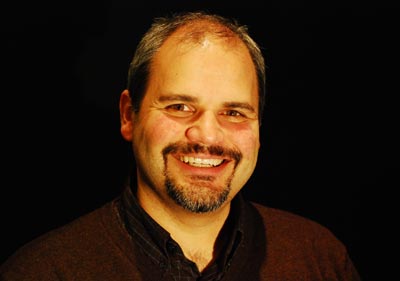 In the March issue of New Jersey Stage, Dr. Eger took a look at
In the March issue of New Jersey Stage, Dr. Eger took a look at 